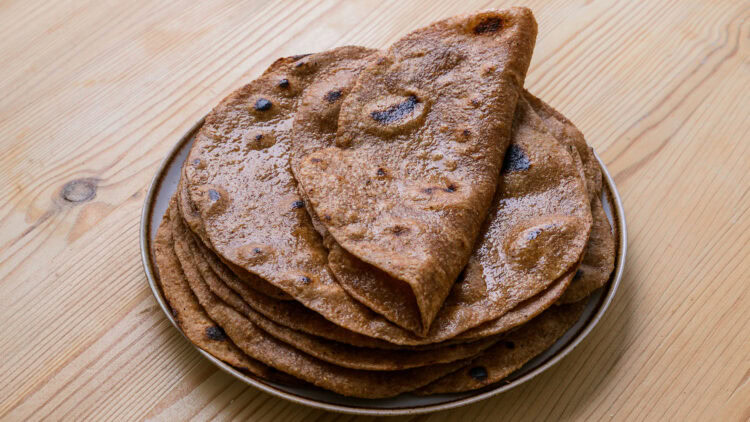These homemade Indian chapatis are incredibly soft and puffy, and make the perfect side for your favorite curries.
The magic happens the moment a thin disc of dough hits the open flame. It tightens, puffs up, then rises like a little golden balloon. This instant transformation is more than just a culinary trick—it’s the foundation of millions of Indian meals.
With just two ingredients—finely milled whole wheat flour called atta and water—chapati has fed farm workers, emperors, travelers, and schoolchildren, standing in for both fork and spoon.
From the Indus Valley to 21st-Century Tiffins: Over 4,000 Years of History
When archaeologists dug into hearths in the Indus Valley, they uncovered wheat grains dating back to around 2500 BCE—the first evidence that a simple flatbread cooked on a griddle was already a dietary staple. Sanskrit texts soon gave it a name: carpatī, “thin flat cake,” a nod to the hand-slapping motion still used to shape the dough.
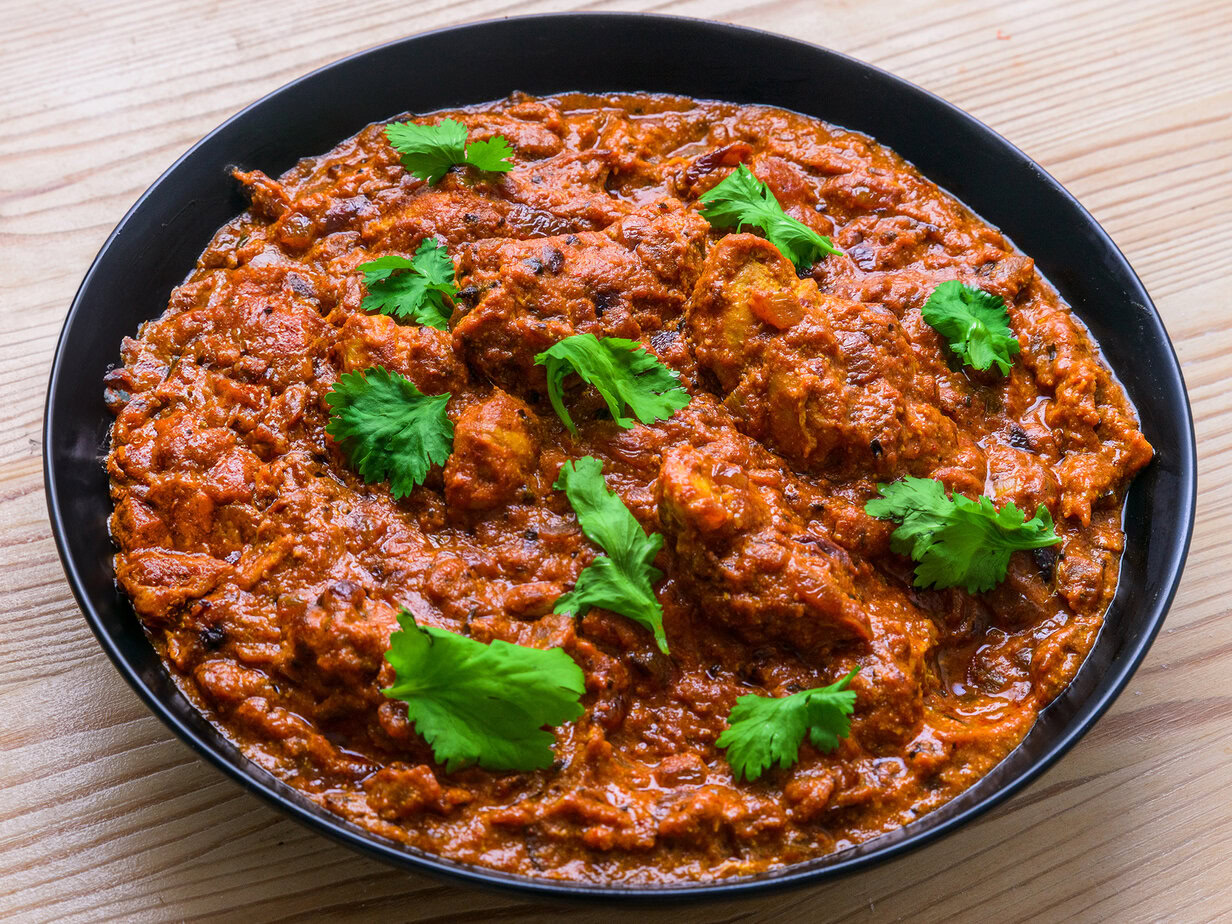
Fast forward to the Mughal court of the 16th century, where the Ain-i-Akbari praised a chapati “thin, roasted, and bathed in ghee,” clarified butter fit for an emperor’s table. Three centuries later, the same flatbread became a secret messenger: villagers passed stacks of rotis from hamlet to hamlet during the 1857 uprising to rally rebels in what became known as the “Chapati Movement.”
Even today, home cooks face the timeless test: is your chapati as round as a full moon? A perfect circle always earns a quiet nod of approval, from Delhi to Detroit.
What Makes a Chapati Authentic? The Essentials
The flour. Authenticity starts with atta, a finely milled, protein-rich whole wheat flour whose subtle nutty note and silky texture set chapati apart from tortillas, pancakes, or pita.
Only water (and sometimes a pinch of salt) joins the mix; add yeast, baking powder, or even a spoonful of refined maida flour, and purists will cry foul.
A vigorous knead for five to ten minutes wakes up the gluten, then a short rest under cover lets the dough turn soft and satiny. No yeast needed.
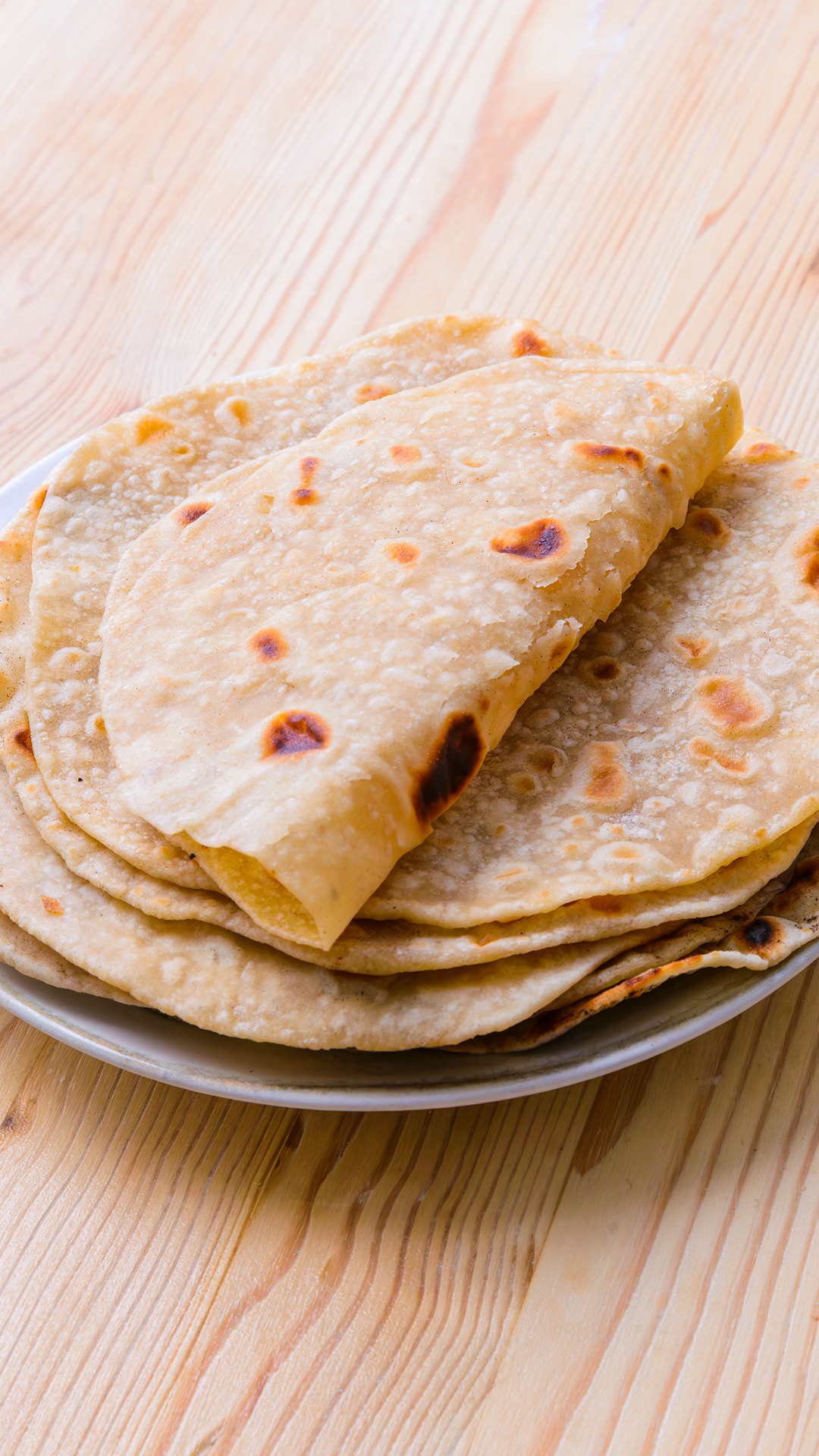
The heat. High heat is non-negotiable. A cast iron tawa needs to be hot enough for the first side to develop brown spots in about thirty seconds. The half-cooked disc is then flipped onto the open flame, where steam separates it into two tender layers and makes it puff up dramatically.
No fat is added during cooking: adding fat at this stage turns the bread into paratha, though brushing the finished chapati with ghee is both common and beloved. The bread should bend without cracking and show leopard-like blisters, not an even tan.
Regional Chapati Variations
Across India, the same dough goes by many names: roti in Hindi-speaking areas, poli in Marathi kitchens, feather-light rotli on Gujarati thalis, or roshi in the Maldives; but the wheat-and-water DNA never changes.
Cooks in Maharashtra often brush ghee between two stacked discs to create a delicately layered poli. Punjabi chapatis are larger and thicker, sturdy enough for sarson-ka-saag, while Gujarati rotlis are rolled paper-thin before puffing up lightly.

Outside the subcontinent, Indian students and grandparents make do with coarser Western whole wheat flour; the trick is to add a little more water and knead longer. Grandmothers everywhere agree: use warm water, let the dough rest, flour sparingly, and keep cooked chapatis warm, wrapped in a cloth so the steam stays trapped inside.
Serving Rituals
Paired with a shimmering dal or a vegetable stir-fry with cumin, chapati completes the Hindi triad of essentials: “roti, kapda aur makaan” (bread, clothing, and shelter). Soft, warm, and delicately nutty, it’s an edible thread connecting home to history—and, thanks to whole grains, to modern ideas of healthy eating.
Mastering the chapati’s puff means joining a four-thousand-year line of cooks who still judge success by the little cloud of steam escaping from a freshly torn edge, warm against your fingers.
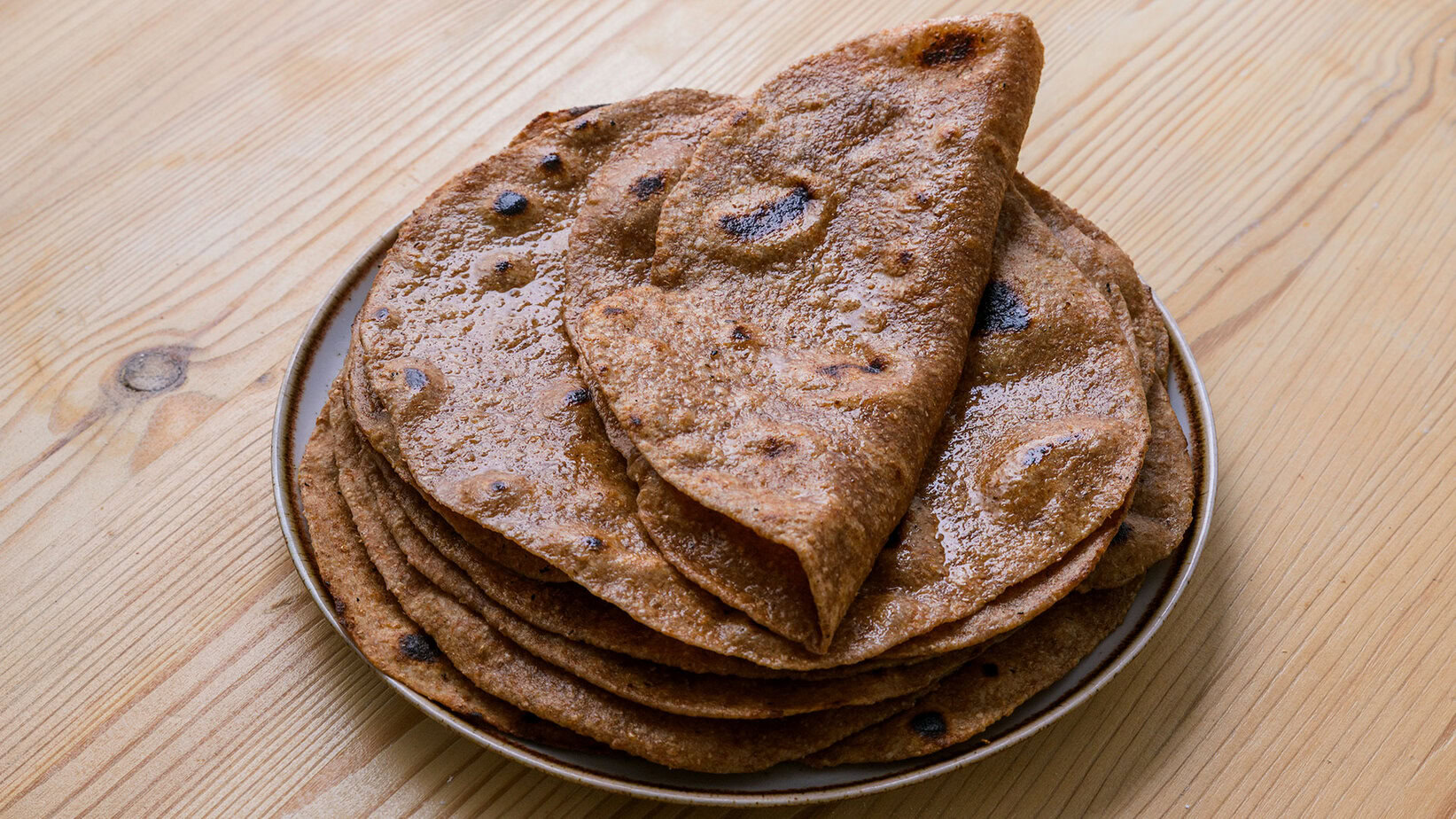
Ingredients
- 340 g whole-wheat flour sifted
- 2 teaspoons salt
- 236 ml water
- extra flour for dusting
- melted butter or ghee for brushing, as needed
Instructions
Dough
- Mix the flour and salt in a bowl. Gradually add the water, stirring to form a shaggy dough.340 g whole-wheat flour, 2 teaspoons salt, 236 ml water
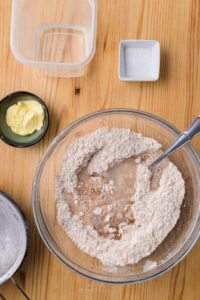
- Knead for a few minutes until smooth. Cover with plastic wrap and let rest for 30 minutes to 3 hours.
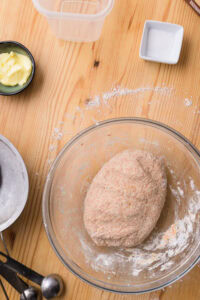
- Knead briefly again, flour the work surface, and divide the dough into 12 equal balls.extra flour
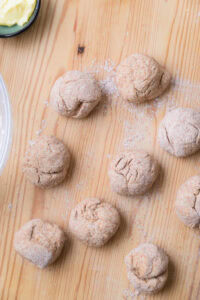
- Roll each ball into a thin 10–15 cm circle, dusting with flour as needed to prevent sticking.
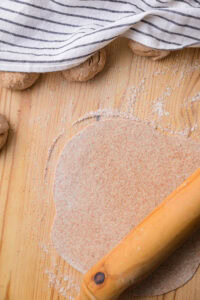
Cooking
- Heat a dry skillet or tawa over medium heat. Cook one chapati until small bubbles appear; flip and cook the other side.

- Using tongs, place the chapati over a second burner set to medium-high to puff. Brush the hot bread immediately with melted butter and cover with a clean cloth; repeat with the remaining chapatis.melted butter or ghee
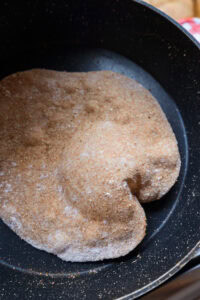
Notes
- A longer rest, up to 3 hours, makes the dough even more supple.
- Wrap the chapatis in a clean towel to keep them soft.
Culinary Sources
• Chapati – Origins, History, and Facts – Britannica (English)
• Food Story: How India’s Favorite Flatbread, Roti, Was Born – The Indian Express (English)
• Chapati – Wikipedia (English)
• Classic Indian Flatbread Recipe: Chapati & Phulka – Guai Shu Shu (English)
• Roti Recipe | Chapati Recipe | Indian Roti – Tarla Dalal (English)
• Soft Chapati Recipe – Soft Roti – Celebrating Flavors (English)
• Indian cooks: I need advice for cooking chapatis on an electric griddle – Reddit (English)
• Indian Chapati Bread Recipe – Allrecipes (English)
• Chapati vs. Phulka – Reddit (English)
• Roti canai/chapati with homemade fruit yogurt, so good! – Reddit (English)
